The Rimfire Report: .22LR For Long-Range Practice

Welcome back to another edition of The Rimfire Report. I’m filling in for Luke this week, whose shoes happen to be pretty big when it comes to experience and knowledge of the rimfire world. In fact, while I have shot countless rimfire rifles and handguns over the years, I’ve only ever owned one, and that is my beloved Ruger American Rimfire Long-Range Target rifle, which I wrote about on The Rimfire Report last time I filled in. I can’t just review my only rimfire gun again, and I didn’t have enough time to acquire something new, so this week I’m going to talk about the purpose behind my Ruger and why it has become a favorite in my collection.
I’ve spent more than three decades shooting all kinds of firearms, and I can’t think of a single discipline within the shooting world that I don’t enjoy. From pistol to three-gun competitions to PRS matches and everything in between, I love it all. Over the years, however, the contemplative math geek in me has imprinted itself on long and ultra-long-range precision shooting, which can be a bit of a logistical and financial burden, as those of you bitten by the bug can attest to. But there is help for those of us afflicted with this condition that can open up possibilities without opening up bank accounts too much, and that’s why using .22LR for long-range practice is the subject of this edition of the Rimfire Report.
Yes, it works…
How hardcore you get with scaling your precision rimfire training is totally up to you. Still, I caution you because I have seen some exceedingly expensive setups that may defeat the cost-saving portion of this article. Even my setup has been criticized as overly spendy for its capability, but it doesn’t hold a candle to how much my long-range platforms cost.
Along those lines, scaling your long-range rifles and your .22LR trainers can also take on new logistical issues depending on how close you want the experience to be. I’ve seen the gamut of obsessive-compulsive calculations, from decreasing target sizes, limiting magnification to scale a 1000-yard experience down to 200 yards, and correlating ballistic data so drop compensation is equal in MILs or MOA to the big boy rifle at distance. I may get into that in a future article, but for brevity, we’ll focus on the basic advantages in this article.
You’ve got to pay to play…
Okay, yes, I’m exaggerating the scale by a lot in comparing my Ruger American Rimfire Long-Range Target rifle in .22LR to my Barrett MRAD in .338 Lapua Magnum, but it makes for great contrast as well as some pretty decent gun porn.
When availability wasn’t an issue, my particular Ruger had a $739 MSRP, which plenty of shooters have found offensive for a bolt-action .22LR rifle and have told me so in no uncertain terms. Still, it is far from a super high-end precision .22LR and doesn’t even factor into the $6650 MSRP of the Barrett MRAD. No big surprises here.
Optics is another category in which results vary depending on how hardcore you want to get. I have seen some relatively insane optics mounted to precision rimfire rifles over the years. Again, I’m taking a more moderate approach with a setup that isn’t the most economical, but is also leaps and bounds more affordable than the glass I want to look through on a target set a mile out. In this case, my Vortex Diamondback Tactical 6-24x50 is more than enough and features an adjustable parallax that focuses as close as 10 yards. Compare its $649.99 MSRP and considerably lower street prices to the $2399.99 MSRP on the Leupold Mark 5HD 7-35x56, and the price gap continues to expand.
Without going over each component in painstaking detail, you see the pattern emerging here. It continues with other gear, including perhaps your bipod selection and scope rings, which I don’t suggest you cheap out on, but that may be overkill if you match them to your long-range setup. Rimfire suppressors will typically cost considerably less than larger caliber centerfire suppressors, which is excellent considering you’ll want to stay away from ammunition that passes through transonic velocities on your precision rimfire rifle, choosing a subsonic round that will remain stabilized throughout its trajectory. As such, nothing is cooler than a suppressed .22 that, when fired, has an audible report that predominantly consists of a click. In my case, I just repurposed a JK Armament .30 caliber suppressor with a .22 caliber endcap because the entire thing breaks down for easy cleaning, a feature you’ll appreciate as rimfire cartridges tend to run pretty dirty.
Something you may not have thought of, depending on the volume of shooting you do, is target expense. Not only will your typical centerfire targets meant for larger calibers laugh all day long as they are tickled by .22LR, but you can also purchase targets specifically for lower power rimfire cartridges that cost you much less, and they’ll still last plenty of outings. Additionally, these lighter-weight targets tend to scale down in size and weight, allowing them to swing more upon impact and provide a better visual of your hits at extended range. This is important as a 200-yard .22LR impact may not provide the most audible or visual feedback.
Lastly, let's talk ammunition. I’m shooting Black Hills 300gr OTM .338 Lapua Magnum through the MRAD. This will cost around $6 per shot, so make them all count. While I feel the same when shooting rimfire, the cost difference is astounding, with my usual Norma TAC-22 .22LR 40gr Lead Round Nose costing me around 11 cents per round. As an ongoing expense, I find .22LR ammunition hard to beat!
Other things to consider…
Aside from the obvious cost of doing business, using .22LR as a platform to train for long-range shooting has some inherent logistical advantages. Let’s start with zeroing. Most rimfire rifles are set up between 25 and 50 yards, a distance you could find at many indoor ranges if the weather is bad, and just the tip of the iceberg at most outdoor facilities.
Next, we move on to truing, which involves developing a ballistic chart based on velocity, load data, and environmental factors. This works the same as larger caliber rifles, but the information compresses into much shorter distances, where these factors start coming into play and affect your trajectory sooner, as .22LR is much more sensitive to wind and environmental variations. Once you've calculated and established a base chart, the next step is to test your firing solutions at varying distances, adjusting for velocity and ballistic coefficient until your data matches your real-world trajectory. Realistically, this can be done with a rimfire rifle, using several data points within a 200 to 300-yard range.
Finding a location to shoot 200 yards is relatively easy compared to 1000 yards, and don’t even get me started on a mile. Suppose you're fortunate enough to have land or access to some land where this is possible. In that case, anyone nearby, including you, will appreciate the reduced noise factor of shooting .22LR, especially suppressed with subsonic ammunition. Feel free to leave your hearing protection at home for this one. Not only could you shoot all day without any worry of noise complaints, but this factor, along with a rifle that just doesn't recoil, makes precision rimfire an ideal method when introducing new shooters, and can also be an effective tool for them to gauge whether they’d like to one day invest in a long-range rig.
Closing thoughts…
Now that I've laid a foundation for the basic principles that make precision rimfire an excellent tool for long-range training and for introducing newcomers to shooting, I can’t ignore the fun factor. Anyone who has spent time shooting .22LR, be it a precision rifle, target pistol, or even blasting away on a binary trigger-equipped 10/22, knows precisely what I’m talking about. These days, especially with ammunition prices being what they are, you could shoot .22LR all day without breaking the bank. Speaking of ongoing costs, I forgot to mention that .22LR doesn’t do much to create heat, certainly not relative to centerfire cartridges. This means your barrel wears at a snail’s pace. Most humans will never find the edge of barrel life on a .22LR, as they have been known to shoot tens of thousands of rounds and even over 100,000 without any significant deterioration of the lands and grooves in the rifling.
If you love precision long-range shooting or are considering entering it but aren’t sure, find a .22 LR setup that suits your taste and budget and a round that consistently works with that setup. Then get out there and have a good time. Enjoy the outdoors, get some vitamin D, and as always, we appreciate your thoughts in the comments below. Thanks for reading The Rimfire Report.

2A enthusiast. If it shoots, I get behind it, from cameras to firearms. | DTOE = Darwin's Theory on Everything | Instagram, YouTube, X: @dtoe_official
More by Darwin N.













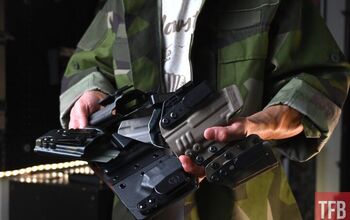
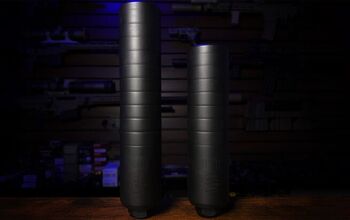
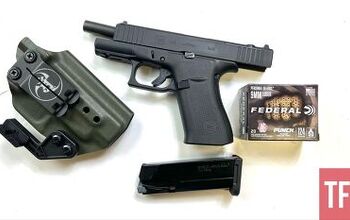






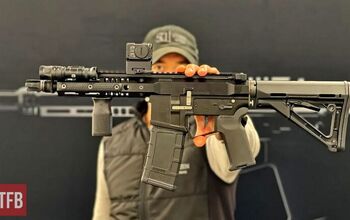


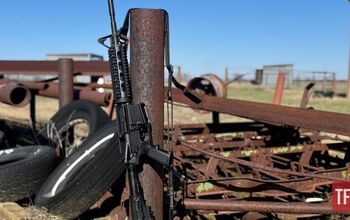


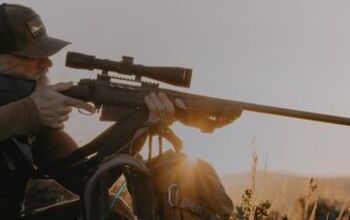
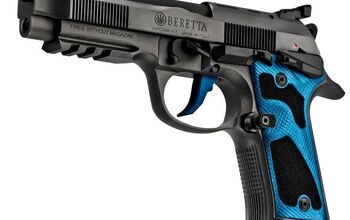

Comments
Join the conversation
Precision rimfire is straight up relaxing and fun. A CZ 457 and a couple boxes of Norma Tac-22 is all I need to lower my blood pressure and chill out. There's nothing quite like shooting tight groups on an individual leaf 50-100 yards away. Not everything needs to be tactical.
I shoot a monthly benchrest rimfire 50 yd match with a relatively high dollar setup (Vudoo/Nightforce). It’s a lot of fun, but last weekend I finally made it to a long range rimfire match and it was hella fun.
Had to dial in 25ish MOA elevation from a 50 yd zero with subsonic match ammo. That’s something like 75” of elevation at 200 yds. Crazy seeing the bullet arc at 42x and smacking the target. And even very mild wind can make a huge difference.